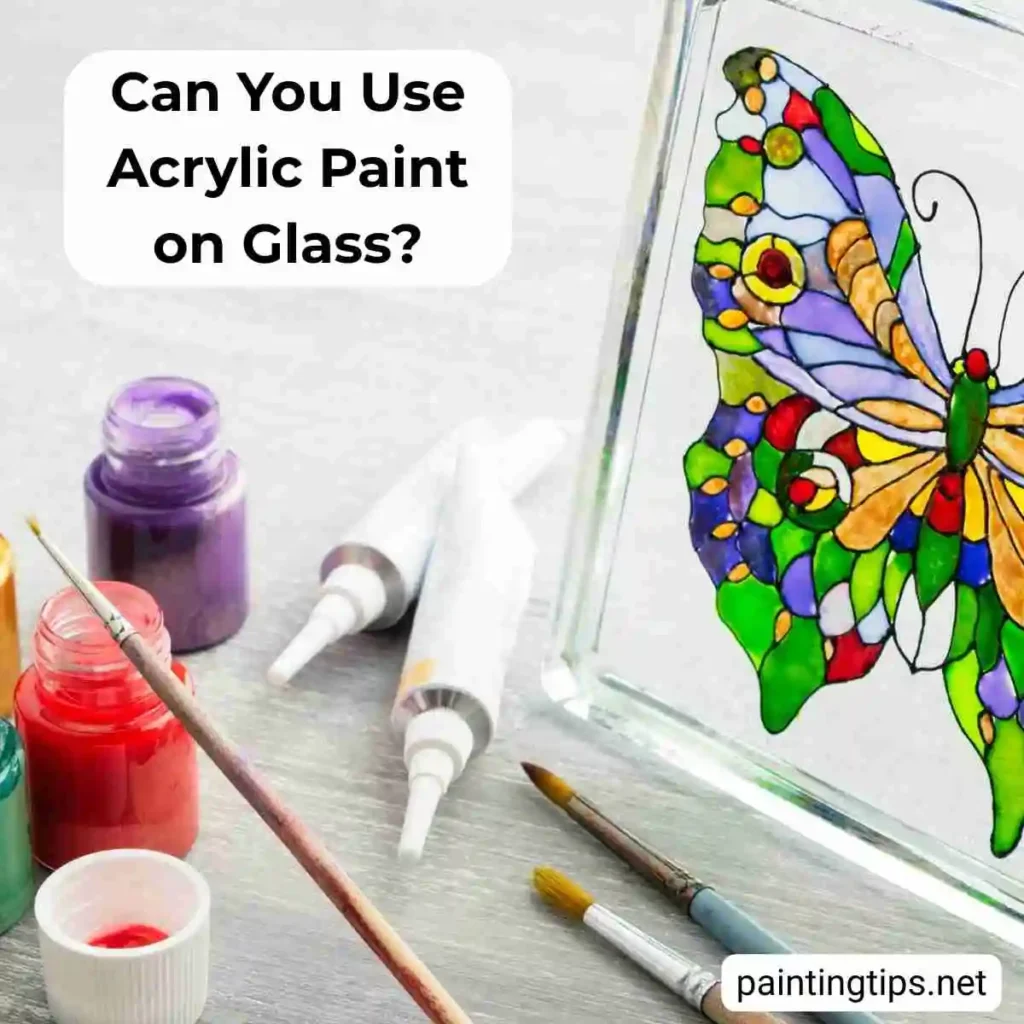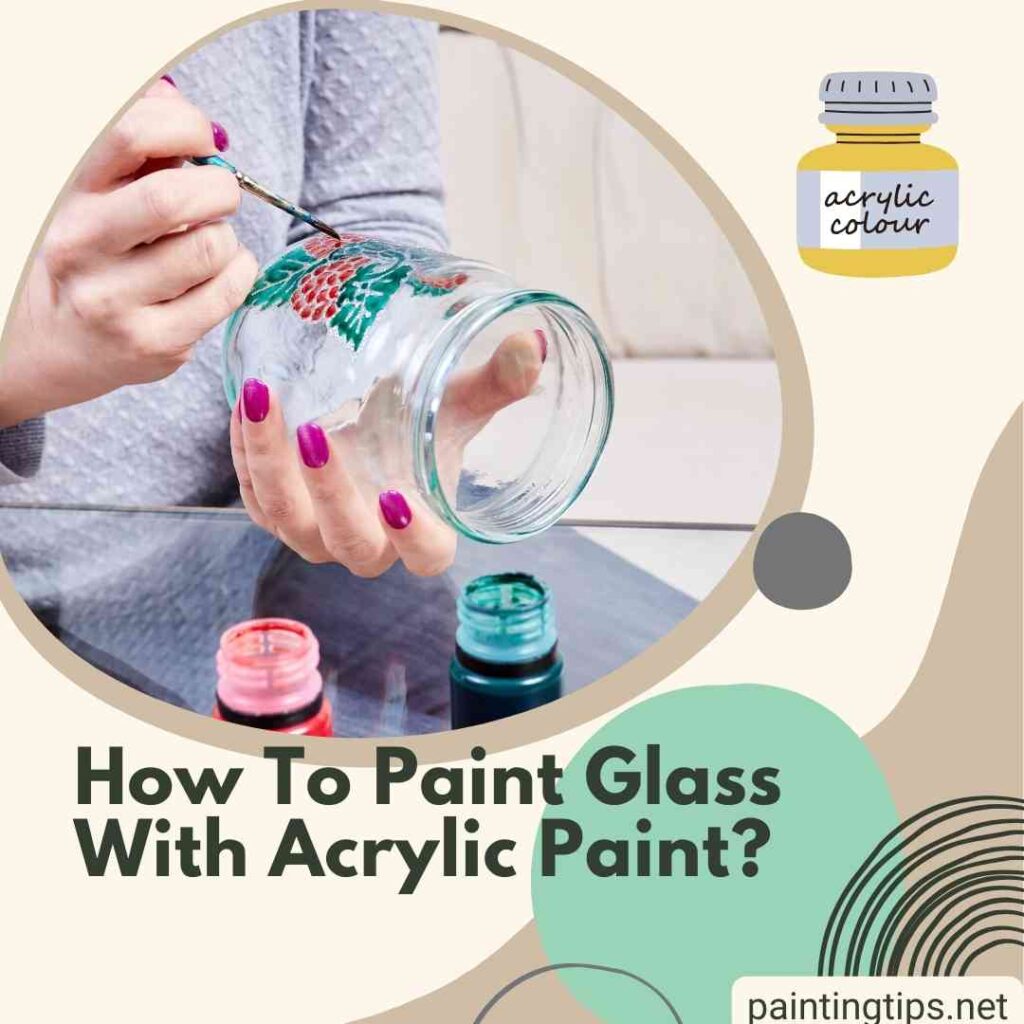Painting on glass can be a fun and creative way to personalize home décor, gifts, or craft projects. While glass may seem like a tricky surface for paint to stick to, acrylic paints—when used correctly—can produce vibrant, long-lasting results. In this guide, we’ll explore the types of acrylic paints suitable for glass, how to prepare your surface, and step-by-step techniques to ensure your designs stay beautiful and durable.
Can You Use Acrylic Paint on Glass?

Acrylic paints are widely used in both the hobby and construction industries, and they come in many different types. “Related article: What is Acrylic Paint Used For?” There are artistic and craft acrylic paints used for painting canvases and small wooden items, and there are acrylic wall paints designed for large interior and exterior surfaces. But which of these acrylic paints is best for painting glass?
All acrylic paints can stick to glass. You can paint glass with standard acrylics, multi-surface acrylic paints, acrylic spray paints, or even interior and exterior acrylic wall paints. However, some of these options adhere better to glass and offer longer-lasting results.
Which Acrylic Paint Should I Use for Painting Glass?
Here are the acrylic paints you can use for painting glass:
- Acrylic glass paints
- General-purpose acrylic paints
- Enamel acrylic paints
- Solvent-based glass paints
Here are some popular and high-quality acrylic paint and medium options:
- Liquitex Glass Medium — A high-gloss medium from Liquitex designed to improve adhesion on smooth surfaces like glass and ceramic.
- DecoArt Glass Paint — Specially formulated for glass and glazed ceramics, available in opaque and metallic colors. Once dry, it can be baked at 275°F to increase durability.
- DecoArt Translucent Stained Glass Acrylic Paint — A 59 ml formula suitable for transparent glass projects.
- FolkArt Enamel Acrylic Paint (Glass) — Comes in a set of 16 two-ounce bottles. After baking, it becomes scratch-resistant and dishwasher-safe.
- Liquitex Effects Acrylic Glass Medium (8 oz / 237 ml) — When mixed with acrylic paint, it creates a high-gloss, scratch-resistant finish on glass. “For more information, read this: What kind of paint to use on glass?”
How do You get Acrylic Paint to Stay on Glass?
You don’t need any extra steps to set specialty acrylic paints on glass. However, to ensure standard acrylic paints adhere well and remain durable on glass, follow these steps:
- Clean the glass thoroughly.
- Apply a coat of acrylic primer.
- Apply two coats of acrylic paint to the glass, leaving a 4-hour gap between coats.
- After 4 hours, seal the paint with an acrylic varnish.
Can you Use Normal Acrylic Paint on Glass?
You can paint glass with regular acrylic paints, but they will be less durable than specialty glass acrylics. If you’re painting a decorative item, regular acrylic paints are sufficient. However, they won’t be resistant to washing or scratching. To improve durability, apply an acrylic primer before painting and finish with an acrylic sealer after painting to increase scratch and wear resistance.
Will Acrylic Paint Wash off a Glass?
Yes, standard acrylic paint can wash off glass if it isn’t properly prepared or sealed. Acrylic paints do not naturally bond strongly to smooth surfaces like glass, so without a primer or sealer, they can easily peel or wash away. To make acrylic paint more durable on glass, apply an acrylic primer before painting, let the paint dry, and then seal it with an acrylic varnish. Specialty glass acrylic paints, on the other hand, are designed to adhere better and remain more resistant to washing and scratching.
How to Prep Glass for Acrylic Paint?
Clean the glass, and remove any labels if present. If you are not using specialty glass acrylic paint, apply a coat of acrylic primer.
How Do You Paint Glass with Acrylic Paint?

- First, clean and dry the glass. If there are any labels, remove them using warm water.
- If you plan to create patterns on the glass, use a fine-tip pencil or a soft brush.
- If you want to completely change the color of the glass, apply a coat of bonding primer or acrylic primer.
- Let the primer dry for at least 4 hours.
- Then, apply the first coat of acrylic paint with a soft brush and let it dry for about 5 hours. “If you plan to paint a glass bottle, this may also be useful: How to paint on glass bottles.”
- After applying the second coat, you can optionally protect the paint with a water-based sealer. “If you make a mistake during the painting process, read this: How to remove acrylic paint from glass.”